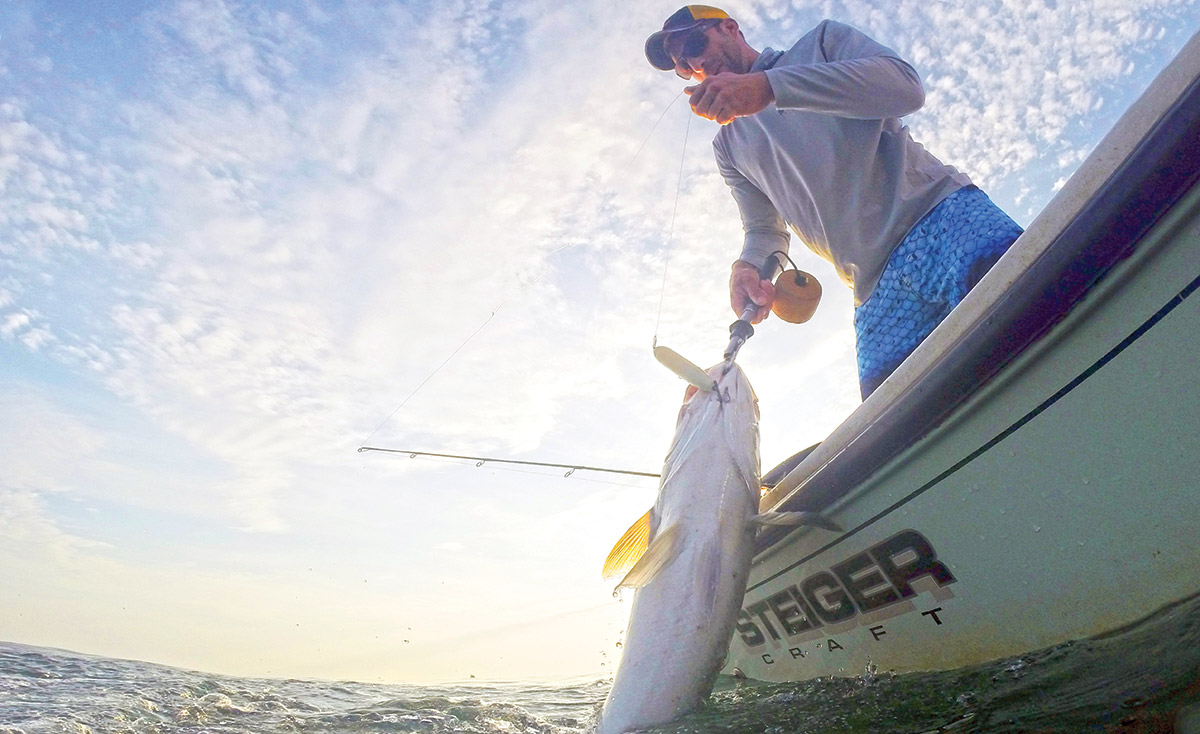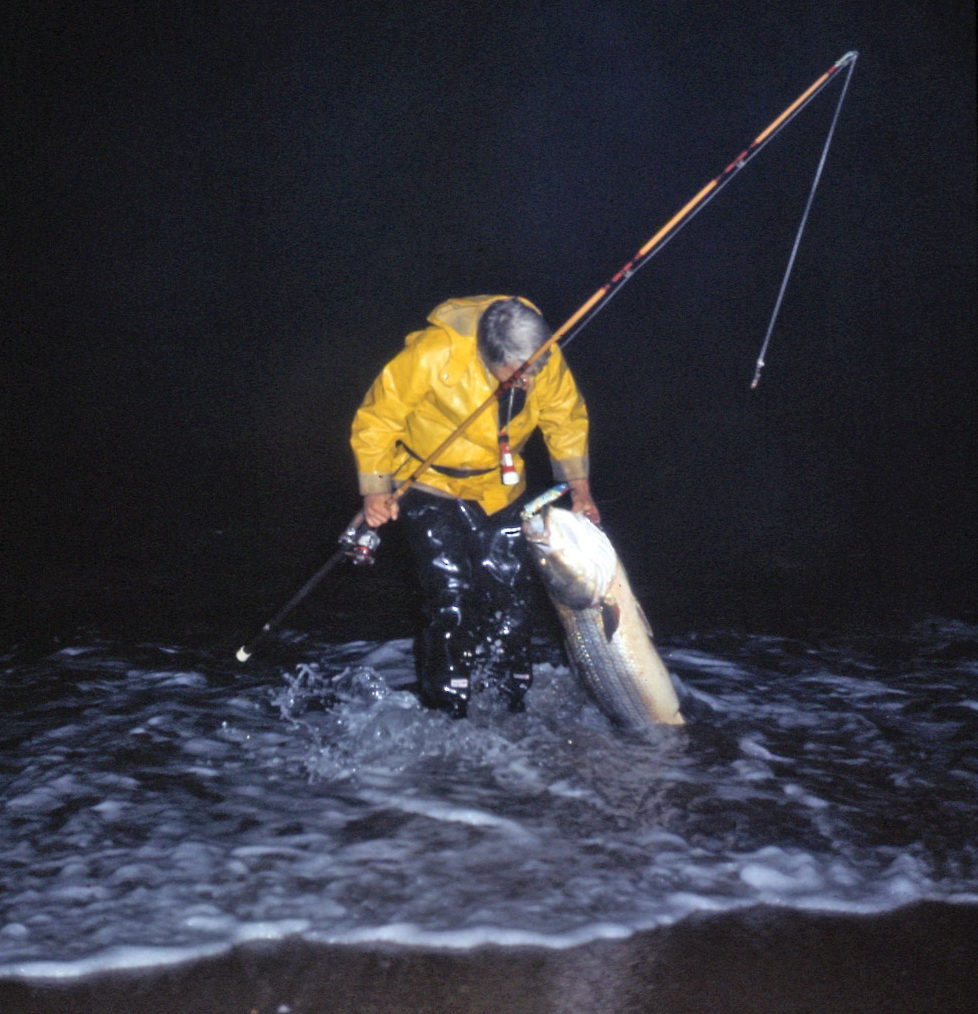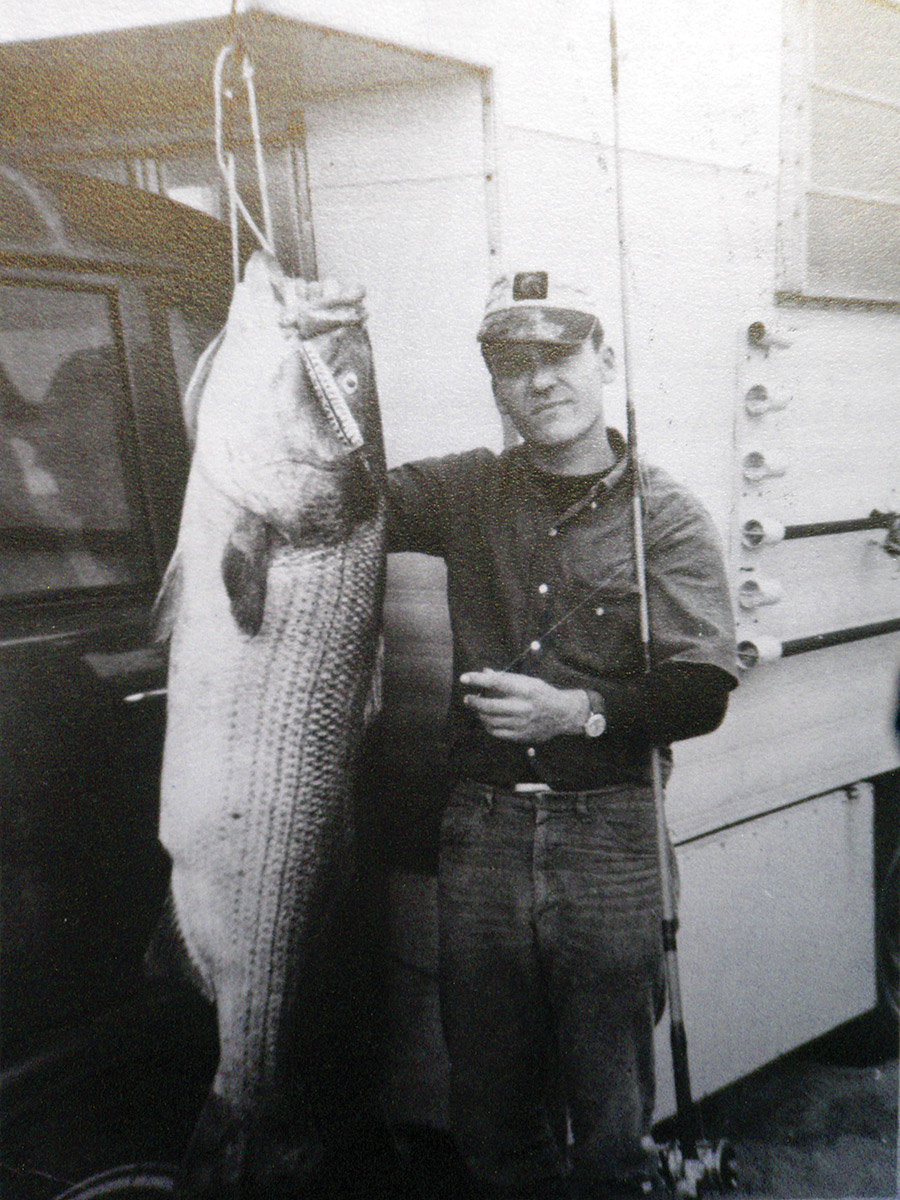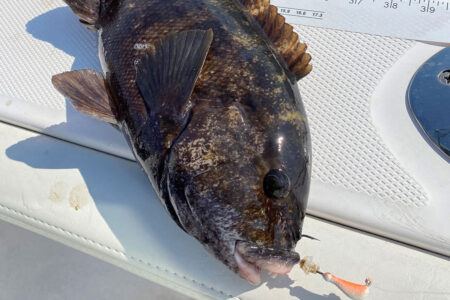
Where and when a school of outsize stripers will show is a roll of the dice. However, among predictors of such moby linesides is the fact that the propensity for schooling in similar size patterns is common. There is ample evidence that in any number of blitz situations there was repeated contact with greater numbers of unusually-large bass. Such fish don’t travel alone. We know this because of the ordinary situations that have cropped up over the years where fishermen kept catching monsters in greater numbers than usual from the same area. Such eye-popping, blow-your-mind big stuff is easily noticed and, it presents evidence of schooling by size. We have a lot of examples.
Provincetown Boats
In 1960 there was rumor of a pod of large stripers lounging on the offshore bars of North Truro. Quite a few of the beach regulars had launched their tin boats and located them. Estimates were that there were about a dozen fish in the bunch with most that were taken weighing over 50 pounds. At that point only a group of beach camping regulars from the Worcester area knew about the find. What had everyone whispering was the high number of these fish that were over 50 pounds. Kay Townsend, who fished frequently with her husband, went to where they were known to hang out and took a 63-1/2-pounder. It might have been the Ladies All-Tackle World Record had not her Worcester buddy and beach friend, Rosa Webb, hauled in a 64-1/2-pounder. Both fish were taken on live mackerel.
Cuttyhunk Monsters

Back in the mid-60s there was a boatman in our striper club who had a standing order with a couple of the famed Cuttyhunk charter skippers that if ever there was a cancellation he wanted to be called to take the vacancy. In those days, best memory, Captains Haig, Sabatowski, and Smith were the skippers who had the keys to the castle.
Fishing Cuttyhunk waters was famous at the time, and a lot of serious striper fishermen were lined up to book a charter with any of these skippers. On my website I once had a post, many years after the experience, when one of our members spoke of wildly successful big water nights dragging wire through the rips at Quick’s Hole where multiple 50-pounders were brought to gaff. Let’s quote Bill Hubbard, “When we left the dock we helped Bob Smith count our catch: 5-50s, 7-40s and 7-30s. Near as we could tell, Haig and Sabatowski had done as well.” Now the story everyone knows.
The aforementioned friend in my striper club was Charles E. Cinto who in the mid-1960s, fishing from Sabatowski’s boat, tied the All-Tackle World Record 73-pound striper that had been taken at, you guessed it, Cuttyhunk; the same place the original record had been caught by Charles Church. Monster contingents? Memorable locations? It just keeps happening.
Provincetown, 1977
A lot of fishing is done on the tip of the Outer Cape. Surf-launched tin boats that tow wire are popular. There is rabid surfcasting by guys who would sell their sisters to catch another striper. It is a crazy place where bathing suits are discouraged and talking to yourself is not even embarrassing. We fished there among the striper faithful for seven years without ever hearing of even one 50-pounder. Then it happened.
Word spread like fire when the first 50 was beached. All in all, I think around 15 such fish were taken that year including one by my wife, Joyce, on a Rebel and one by me on a rigged eel. We never knew when or exactly where it was likely to happen, but in the backdrop of it being so rare, surfcasters were abuzz that at long last it was going to take place in our waters. Over time it happens everywhere else. Most delicious of the occurrence was that not one moby striper was caught from a boat that season!
Nauset Beach, 1981
Another hotspot that routinely gave up an occasional monster, one here one there, but rarely more than one per season, Nauset Beach busted wide open a year after the famous P-town blitz. With nothing in P-town we walked right into it at Nauset. My wife beached a 49-pounder and I a 53. Those were strays, but the mother of all migratory blitzes came in 1981. That year Andy Mendola beached a 60-pounder. Stephen Petri, a 17-year-old caster was fishing with his father Steven and Al Buccaolla; they lost track of their moby linesides. There was clear evidence those fish don’t travel alone because after the boy took a 57-pounder to the taxidermist he later beached an incredible 69-1/2-pounder! There were other monsters, even one allegedly over 70, but too many to list here. Sadly, none were mine.
Charlestown, RI, 1969

In those days not many anglers fished the beach in Rhode Island. Usually, there was only myself, brother Norman, and Butch Calkins who was a retread Quonnie rat that I rescued from beer drinking in a rotation there. In those days my family and I bounced off of the Cape to escape the gunky red weed that usually ruined Nauset Beach. I was lucky enough to have a Rhody spy, Ray Jobin, who would drop me a card when, as he would say, “The pond is stocked.” In a lifetime of the striper surf, that was the only year I ever caught TWO stripers over 50. What a job we did with live eels. It didn’t all happen during the same night, but we commonly ran into pods of big bass, which was clear evidence that a contingent of moby stripers lurked in the area. Few, other than Ray Jobin, knew it. The score from our surf bunch was me a 51 and a 52, Norman a 50 even, scale bouncing between 49-15 and 50-1, and Butch, a 55. There were others but to Ray Jobin it was no big deal. One of the nights of my large, he had four in his boat over 50 – one night!
Block Island
Over 50 years ago, the island to the south was the first place about which I wrote and published a story. Since then, there have been any number of moby stripers caught there mostly, but not necessarily, from boats. I know the late Tim Coleman, former editor of this publication, beached a 60 and in keeping my annual 50s count there were sets of years when the best stripers of the season came from boat fishing in the waters of Block Island. No doubt they were spread and likely these catches occurred over a period of years, but the Block became the new Cuttyhunk. Too numerous to list, Block Island is the top producer of stripers over 50, 60, and 70. Some illustrious ones are: Joe Mureel, 2008, 68-9; Matt Weckbacher, 2017, 69; Joe Szabo, 1984, 70-4; Joe Diorio, 2018, 71.29; Peter Vican, 2008, 76-14; Peter Vican, 2011, 77-4.

Repeat wild fishing is not reliable but most of the better ones repeatedly host contingents of memorable stripers. Remember and watch the better ones because it is bound to happen again and they will come with friends.




